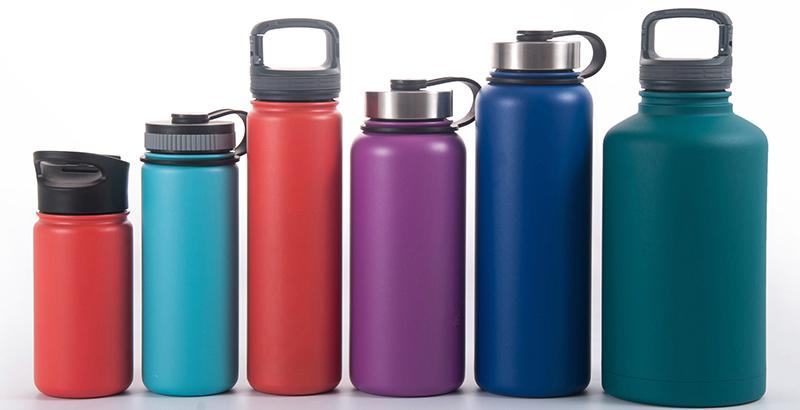Eco friendly or sustainable water bottles are designed to have less environmental impact than traditional plastic water bottles. These water bottles are made from renewable and recycled materials like aluminum, glass and plant-based plastics. With growing concerns about plastic pollution and need to reduce our reliance on single-use plastics, eco friendly water bottles have become increasingly popular in recent years.
Materials Used in Eco Friendly Water Bottles
Aluminum Water Bottles
Eco-Friendly Water Bottle is 100% recyclable and commonly used material for reusable water bottles. Aluminum bottles are lightweight yet very durable. They do not leach chemicals into the water like plastic bottles. However, the production of aluminum requires huge amounts of energy. But the recycling process requires 95% less energy than production from virgin material. So aluminum bottles are a more sustainable option if recycled after use.
Glass Water Bottles
Glass water bottles do not leach chemicals or degrade over time like plastic. However, glass is heavier and breakable. But glass can be recycled endlessly without loss of quality. Modern production techniques have made glass bottles quite durable. Borosilicate glass, a type of glass, is heat resistant and shatterproof, making it a popular choice. But glass requires more energy for production compared to other materials.
Stainless Steel Water Bottles
Stainless steel bottles are extremely durable and do not leach chemicals. They keep water cooler for longer duration and can withstand high temperatures. Stainless steel can be recycled dozens of times. However, production requires more energy than other reusable materials. Insulated stainless steel bottles are a popular eco friendly option.
BPA-Free Plastic Bottles
Some eco friendly water bottles are made of plant-based plastics like PLA which are BPA-free, lightweight and shatterproof. They are renewable and compostable. But large-scale commercial composting facilities are still limited. Regular plastic recycling remains the best option currently. Hybrid bottles combining glass or steel with BPA-free plastic are also available.
Benefits and Drawbacks of Different Materials
Each material has its inherent pros and cons for the environment:
- Aluminum production requires lot of energy but highly recyclable with low recycling costs. Lightweight and widely recycled.
- Glass is reusable without quality loss but energy intensive to produce and transport due to weight. Requires careful handling.
- Stainless steel is extremely durable but energy intensive to produce. Heavier than other options.
- Plastic from renewable sources reduces fossil fuel dependency but commercial composting infrastructure limited. May release greenhouse gases during decomposition.
- Hybrid options try to balance various material qualities but use multiple materials.
Overall, recycling plays a big role. Along with material choice, reuse of water bottles has most positive impact by reducing manufacturing impacts for replacement bottles. Regular cleaning also helps bottles last longer before recycling.
Cleaning and Maintenance of Reusable Bottles
Proper cleaning and maintenance helps reusable bottles last longer and function better. Handwashing bottles with mild dish soap and rinsing thoroughly after each use removes germs, bacteria and odor causing residues.
For plastic or stainless steel bottles, boiling water for 1 minute periodically or using bottle cleaning tablets safely sanitizes the inside. This kills 99.9% of germs without use of harsh chemicals.
Air drying bottles upside down on a clean towel allows for evaporation of all moisture inside. Storing dried bottles away from direct sunlight and heat keeps them free from mold and algae growth.
Regular descaling of hard water deposits in bottles using white vinegar solution maintains their appearance and function. Limescale can clog nozzle openings over time if not removed.
Rinsing bottles with bleach solution quarterly disinfects them deeply. Using leakproof bottles prevents spills and cross-contamination during cleaning. Proper handling keeps them hygienic for longer safe use.
Eco-Friendly Water Bottle for Our Future
In conclusion, reusable bottles made from renewable and recycled materials can significantly reduce plastic waste if implemented widely on individual and community levels. Whichever bottle material one chooses, regular cleaning and long-term reuse habits maximize their sustainability benefits. With growing bottled water consumption globally, eco friendly alternatives can play a big role in reducing our environmental footprint if production also focuses on lowering energy usage. Overall reducing, reusing and recycling are key to sustainably meet our hydration needs.
